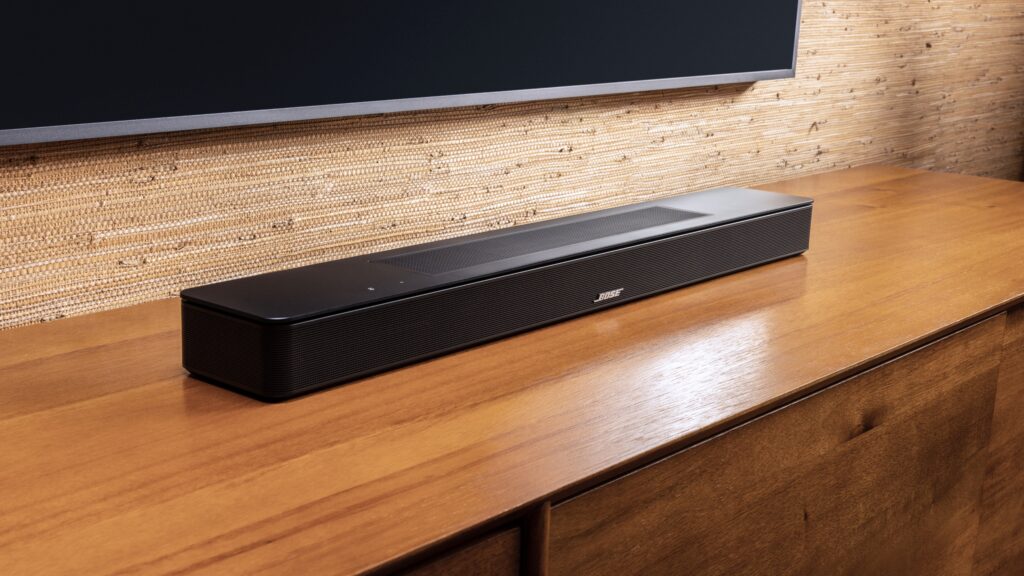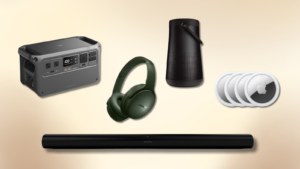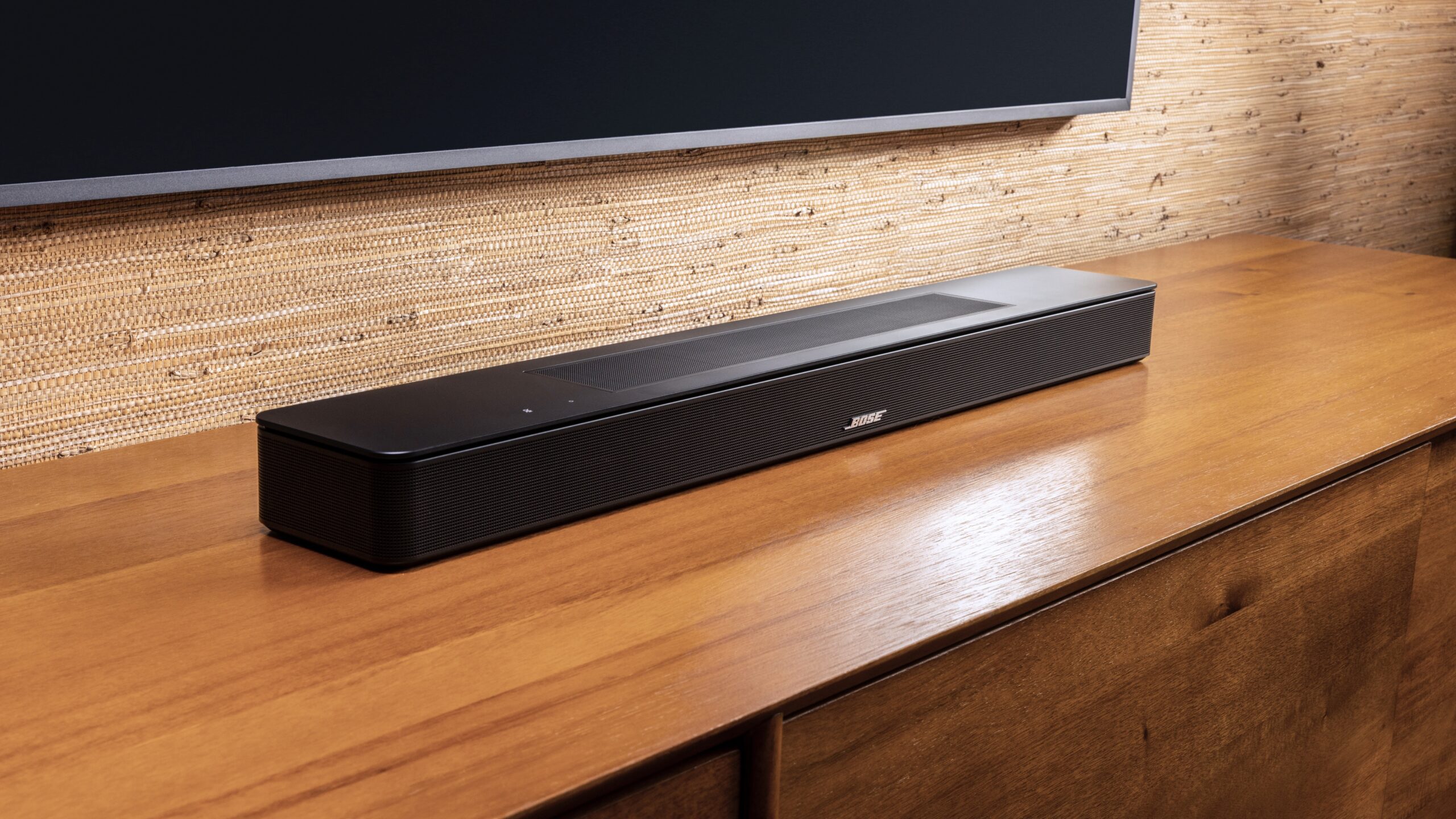
Building a home entertainment system that checks all the boxes takes time. Likely, if you’re reading this, you’ve found the right TV for you, set up smart lights for ambiance, and now, you’re ready for the next step: investing in a soundbar.
A good soundbar can make watching a movie in your living room feel more, for lack of a better word, cinematic. When it comes to finding the soundbar that can do that for you, however, the path is a little less straightforward. While it’s entirely possible for you to dive into figuring out what exactly Dolby Atmos is or understanding the pros and cons of a subwoofer, you can save yourself a lot of time by seeing what the experts have to say.
Ty Pendlebury tests and researches TVs and home entertainment tech for CNET, a sister site of Mashable also owned by Ziff Davis. He’s been testing audio-visual equipment, including soundbars, for over 20 years.
“I reckon I’ve reviewed over 100 soundbars in my time,” Pendlebury wrote to Mashable.
When creating CNET’s guide for the best soundbars, he tested soundbars in the CNET AV Lab, using several different types of media including movies, music, and games, to determine which soundbars sound the best.
Below, we’ve combined Pendlebury’s testing results and expertise alongside Mashable’s most recent soundbar reviews to select three of our top picks for the best soundbars.
Is it worth getting a soundbar?
Built-in TV speakers are typically located at the back of the TV, pointing down, which isn’t the best position for optimal sound quality. At the most basic level, soundbars fix the issue by directing the sound outward toward the room.
So what does that fix cost? Soundbars can run anywhere from as low as $75 to easily over $1,500. Obviously, that’s a wide range, but most of the selections in Pendlebury’s guide, and the soundbars we’ve tested at Mashable in past years, fall in the the $200 to $700 range. To simplify your search, we’ll be pulling picks that sit roughly in the low, middle, and high points of that range.
Ultimately, opting for a soundbar lets you improve the audio experience of your TV, while costing significantly less than investing in an entire speaker system.
How to choose a soundbar
Beyond price, soundbars have a few more features worth considering, but that doesn’t mean the buying process requires you to be versed in a ton of tech terminology. In fact, Pendlebury told Mashable, “Thankfully, buying a soundbar is a lot easier now than it used to be,” due in large part to most having an HDMI connection, which allows for the easiest plug-and-play experience with your TV.
Along with connections, here are a few more features you’ll see highlighted with soundbars on the market these days:
Dolby Atmos
Dolby Atmos is essentially the name of a type of spatial audio designed to deliver a three-dimensional audio experience. To clear up a couple of misconceptions off the bat: In the same way not all headphones with active noise cancellation perform equally, not all soundbars with Dolby Atmos will give the same sound performance across the board.
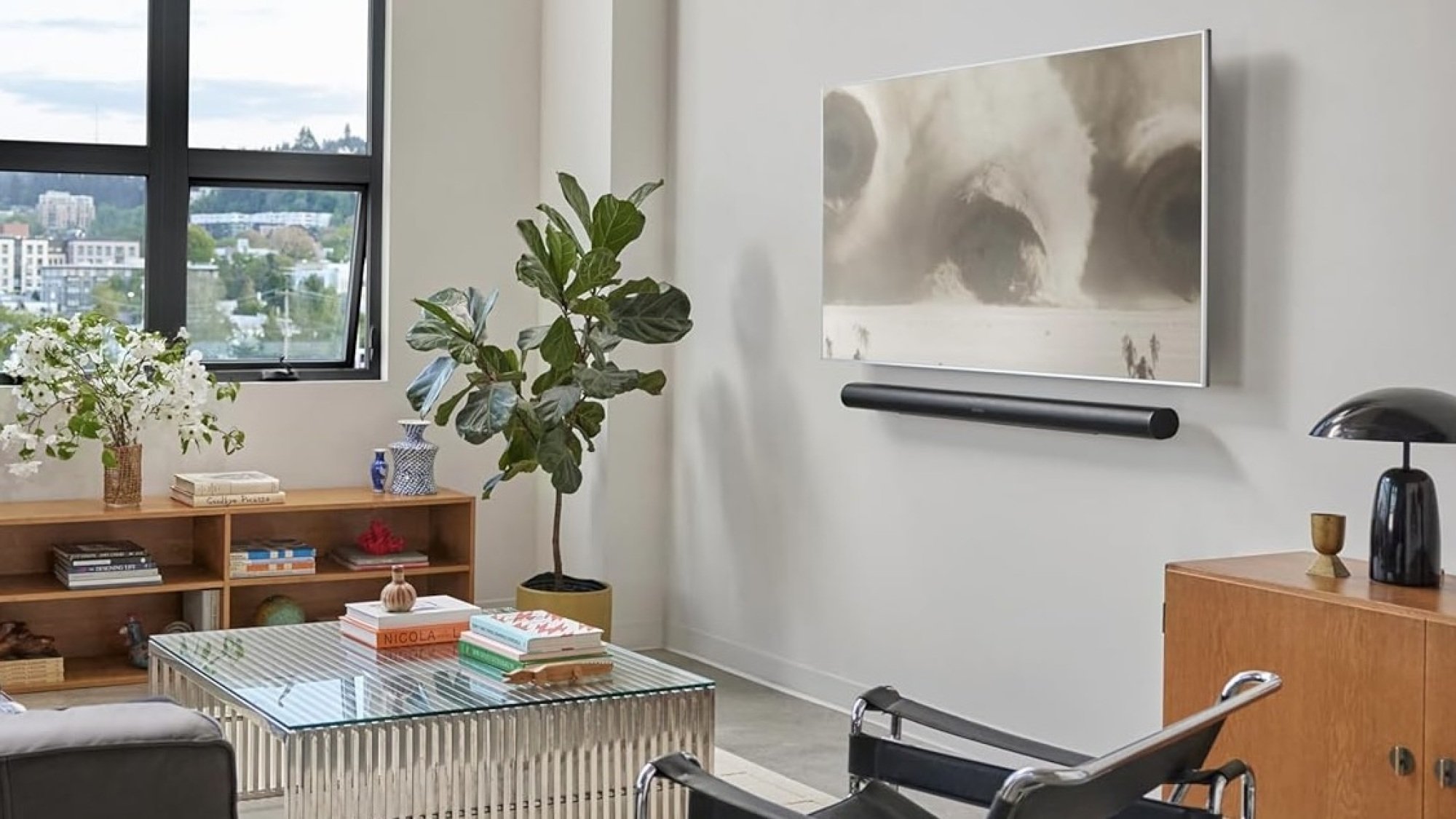
Credit: Sonos
Perhaps even more important to note is that while Dolby Atmos offers a more immersive sound, it’s not exactly the same experience as getting true surround sound. “The biggest misnomer about soundbars right now is that if it has a Dolby Atmos sticker, it can do surround sound, especially if the soundbar is only $200,” Pendlebury explained. “It needs dedicated speakers if it’s going to do surround sound. While height is easy to replicate, sound is literally bounced off the ceiling. I’ve never heard sounds coming from behind me in a speaker that sits under the TV. Dedicated surrounds provide the best experience.”
Subwoofers and surround sound
As Pendlebury explained, to achieve true surround sound or exemplary bass sound, you’ll need dedicated equipment. Simply put, you’ll need multiple speakers. If you want true surround sound, you’ll want to take that into account when determining where your budget may sit for a soundbar. For instance, even though our upgrade pick, the Sonos Arc Ultra, provides excellent sound designed to be immersive, it can’t achieve the same surround sound that it would without dedicated speakers to help it out.
The same goes for subwoofers — a soundbar on its own can have great bass playback, but the best way to achieve the home theater experience is to get a subwoofer. While none of our picks below have one included, they all have compatible ones available for additional purchase. That said, our alternative budget pick, the Vizio 2.1 soundbar, does come with a six-inch subwoofer and two wired satellite speakers.
Connection types
As mentioned above, most soundbars these days offer HDMI connections, making it incredibly easy to get your setup going. However, you might prefer to also have Bluetooth or WiFi connectivity. As with many other device types, Bluetooth offers a simple way for you to connect to a soundbar and stream audio from devices like your phone, but as Pendlebury explains, WiFi offers a distinct benefit “as it means you can stream Spotify, for example, without running your battery down — like you would with Bluetooth.”
Smart features
Smart features, like voice assistance integration, are also relatively commonplace these days (see: our Bose pick literally having smart in the name). Still, the execution isn’t all the same. While even the most budget-friendly picks can work with AirPlay, more mid-range options may give you flexibility on how your soundbar is integrated into your smart home, and even, as with the Sonos Arc Ultra, can be used independently as smart speakers, even when the TV isn’t on.
We also want to note that soundbars exist for computer setups, but for the purposes of this guide, we chose our top picks based on TV selections. (If you’re looking for some audio options for your computer, you can check out our guide to the best Bluetooth speakers).
Best soundbar for most people
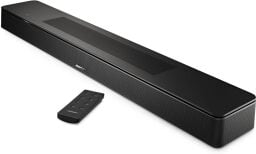
Opens in a new window
Why we like it
Check out our full review of the Bose Smart Soundbar.
The Bose Smart Soundbar isn’t the cheapest option out there, but for folks who want more than the bare minimum features, it’s a great option with powerful sound that doesn’t demand a ton of space on your media console. “For most users, I think this soundbar hits the sweet spot in terms of features, sound, and value for the dollar,” wrote Mashable contributor Timothy Beck Werth in his review of the soundbar.
Beck Werth tested the soundbar with TV shows, music, and movies, and found that the Bose soundbar offered a far superior experience than the built-in speakers on his TV. The bass sounded pronounced without losing clarity, while everything from music to F1 races sounded balanced. Perhaps best of all, Beck Werth reported, “For TV shows, I was able to turn off closed captions for all but the most accent-heavy shows.” Bose’s AI Dialogue Assist feature also helped clarify vocals even more, offering hope to anyone who’s become a little more reliant than they would like on closed captions.
This performance is thanks to the five different transducers (including two that point upwards to bounce sound off the ceiling) and central tweeter. Again, if you’re looking for more than the bare minimum, you’ll find that in the inclusion of Dolby Atmos, which Beck Werth said made the sound quality “really [sing],” where it was available. While there’s a lot to praise, it is worth noting this soundbar doesn’t come with a subwoofer, but you can connect your own or purchase one down the line, giving it some solid upgrade potential.
As for your connection options, this mid-range pick offers plenty, with connectivity available through HDMI, WiFi, Bluetooth, Apple AirPlay, Google Cast, and Spotify Connect. And as it’s a smart speaker, it also works with Amazon Alexa and Google Assistant.
The previous generation of this soundbar, the Bose Smart Soundbar 600, is CNET’s top pick for the best compact Dolby Atmos soundbar. As it was phased out last fall with the release of this soundbar, we recommend opting for the newer version, which is easier to find in stock.
Best budget pick

Opens in a new window
Why we like it
Check out CNET’s full review of the Roku Streambar.
The Roku Streambar is CNET’s top pick overall for the best soundbar (and an Editors’ Choice award recipient), but despite the accolades, it’s available at an incredibly budget-friendly price. If you’re shopping for your first soundbar or simply looking to upgrade your sound system while spending less than $150, the Roku Streambar is your best bet.
Alongside an upgraded sound system, opting for this soundbar will give you access to the 4K Roku streaming interface, giving you an easy way to watch all your favorite streaming services, from Netflix and YouTube to Disney+ and Hulu. The included remote makes navigating the Roku interface especially easy, and it can work to turn your TV on and off.
While combo products often mean that something is sacrificed in the process, Pendlebury called the Roku Streambar the answer “if you want to be able to hear your TV better, particularly vocals, and also enhance its streaming capabilities,” especially if you don’t already have a streaming device in your setup. (If you do already own a streaming device, the Vizio 2.1 soundbar is another great option that clocks in under $200 and comes with a subwoofer).
The four internal speakers may not offer absolute top-of-the-line sound (the bass could be better on this soundbar), but you’ll find that it offers a noticeable boost to the quality and depth of the sound from your TV, especially with dialogue. The Streambar’s compact size (it clocks in at 14-inches wide) means that while it can’t compete with soundbars that simply have the space to create a fuller sound, it’s not a bad trade off for folks who are short on real estate for speakers in their TV setup. Plus, if you decide you want to upgrade the sound profile, you can purchase a Roku subwoofer for $130 (and still be spending nearly $250 less than you would on the also subwoofer-less Bose Smart Soundbar).
Alongside the HDMI connection that works with your TV’s HDMI ARC or Optical outputs, the Roku Streambar is also compatible with Bluetooth, Apple AirPlay, Google Home, Alexa, and of course, Roku Smart Home.
Best upgrade pick

Opens in a new window
Why we like it
Check out our full review of the Sonos Arc Ultra.
We know — this soundbar sits firmly on the high end of the price spectrum, but we wouldn’t be including it if we didn’t think it was worth the price. The Sonos Arc Ultra is a true upgrade pick, offering some of the highest-quality sound for under $1,000 you can get. As Mashable contributor Timothy Beck Werth put it in his review: “While a single soundbar can’t compete with the booming speakers you’ll hear in a movie theater, this speaker gave me the closest match to that experience I’ve ever had in my living room.”
The Arc Ultra achieves that feat through its impressive hardware, which includes 14 drivers and 15 Class-D digital amplifiers. Of course, it also comes equipped with Dolby Atmos and the brand’s Sound Motion technology. All of this comes packed in a package much bigger — and much more sleek looking — than something like the Roku soundbar, meaning that you’ll want to make sure you have space cleared on your media console. The result is that even without a subwoofer or any peripheral speakers, Beck Werth said he could “feel the bass in my chest. It really felt like sandworms were exploding out of the desert all around me,” as he watched Dune.
This is the level of sound quality you’d expect from a soundbar that’s twice the price of our top pick for most people and nearly eight times the price of our budget pick. But naturally, that’s not where our praise for it stops. Despite delivering top-of-the-line performance, it’s incredibly easy to use, plugging and playing via HDMI just as well as our less expensive picks. With “a single tap on my phone screen,” Beck Werth was able to sync the soundbar to his TV and remote, with the Sonos app helping him connect Spotify, Amazon Music, and Alexa with just a bit more effort.
Beyond the initial setup, the Sonos app can also be used to activate Trueplay, which helps you get the absolute most out of your speaker by adjusting the audio based on the layout and acoustics of the room the speaker is in, so you don’t have to fiddle endlessly with audio settings. And when your TV is off, you can use the Arc Ultra as a smart speaker via voice control. But if you’d rather not have the mic on 24/7, Sonos also included an option to toggle that off.
So what’s the catch? Obviously, you’re paying for what you get, but beyond that, we really didn’t have many issues with the Arc Ultra. The last thing we can stipulate is that even for as good as it sounds, it won’t replace a setup with dedicated speakers and subwoofers to create true surround sound, but that’s less a knock against Sonos and more a reality of any audio setup.

